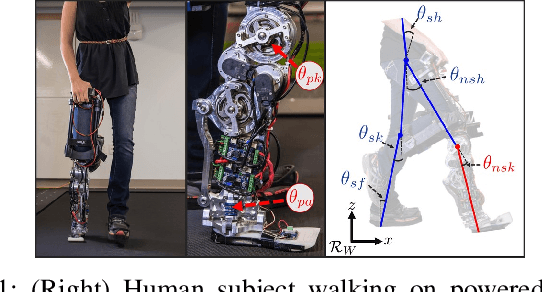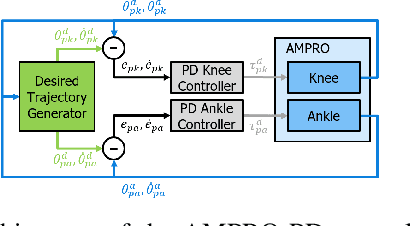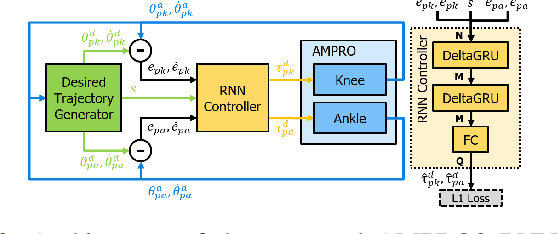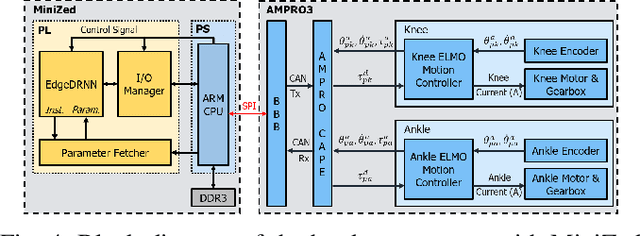Recurrent Neural Network Control of a Hybrid Dynamic Transfemoral Prosthesis with EdgeDRNN Accelerator
Paper and Code
Mar 05, 2020



Lower leg prostheses could improve the life quality of amputees by increasing comfort and reducing energy to locomote, but currently control methods are limited in modulating behaviors based upon the human's experience. This paper describes the first steps toward learning complex controllers for dynamical robotic assistive devices. We provide the first example of behavioral cloning to control a powered transfemoral prostheses using a Gated Recurrent Unit (GRU) based recurrent neural network (RNN) running on a custom hardware accelerator that exploits temporal sparsity. The RNN is trained on data collected from the original prosthesis controller. The RNN inference is realized by a novel EdgeDRNN accelerator in real-time. Experimental results show that the RNN can replace the nominal PD controller to realize end-to-end control of the AMPRO3 prosthetic leg walking on flat ground and unforeseen slopes with comparable tracking accuracy. EdgeDRNN computes the RNN about 240 times faster than real time, opening the possibility of running larger networks for more complex tasks in the future. Implementing an RNN on this real-time dynamical system with impacts sets the ground work to incorporate other learned elements of the human-prosthesis system into prosthesis control.
 Add to Chrome
Add to Chrome Add to Firefox
Add to Firefox Add to Edge
Add to Edge